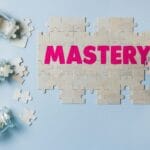Did you know nearly every talk we have involves persuasion? It’s key when choosing where to eat or deciding on business strategies. Persuading someone isn’t about winning. It’s about mutual understanding and finding a path that benefits all. Persuasion is a vital skill, not just for salespeople but for everyone.
Persuasion mixes emotional intelligence, logical reasoning, and empathy. I aim to simplify this art, making it feel like chatting with an old friend. By using these tactics, you’ll not only sway others but boost your relationships too.
In today’s world of virtual talks and many decision-makers, influencing skills are crucial. It’s not about manipulation. It’s about connecting deeply to build trust and understanding. Let’s dive into techniques that improve persuasive communication and achieve win-win situations.
Key Takeaways
- Persuasion is ever-present in daily chats, not just formal ones.
- Knowing how to persuade involves emotional smarts and empathy.
- Good influencing skills enhance personal and work relationships.
- Great persuasion is more about mutual gain than winning an argument.
- With practice and the right methods, anyone can master persuasion.
The Art of Persuasive Communication
In today’s world, being good at persuasive communication is key. It helps in speeches, selling products, or just talking to a friend.
Good persuasion skills can really improve how well you do.
Understanding Your Audience
Knowing what people want and fear is important for persuasion. I try to understand their motives. Then, I can make messages that really hit home.
This helps me tailor my approach to meet their specific needs and dreams.
Mastering the Power of Persuasive Language
Persuasive language is at the center of influencing others. I aim to use words that aren’t just about facts. They should also spark feelings and imaginations.
This can mean telling stories, using metaphors, or picking powerful words that make people think or act differently.
Crafting Compelling Messages
How a message is built and how clear it is matter a lot. When I create messages, I keep them short and to the point. I want them to stick in people’s minds and make them think or do something.
Remember, choosing the right word can often mean more than a long speech.

Using these strategies—knowing the audience, using the right words, and clear messaging—I get better at persuading. Mastering these areas helps me drive results and bring about change. It works in both my personal and work life.
How to Persuade Someone Using Psychological Methods
Mastering the art of persuasion means knowing how to use psychology to influence decisions. Techniques like building rapport, offering something first, and showing that others agree can make your communication more convincing. These methods set the stage for more effective talks.
Building Rapport for Influence
To convince others, creating a genuine connection is key. People are more open to ideas when they feel understood. This means listening, showing you care, and mirroring their actions to build trust.
Using Reciprocity to Convince
The concept of reciprocity is a strong psychological tool. It says people want to return favors. By offering help or kindness first, they’re more likely to listen to your suggestions later.
Leveraging Social Proof in Arguments
Adding social proof makes your argument stronger, especially today. Using endorsements or showing wide support makes your case stronger. It leverages the trend of following societal norms.
| Technique | Description | Example |
|---|---|---|
| Building Rapport | Connect on a personal level by actively engaging and empathizing. | Listening actively to concerns before presenting your position. |
| Reciprocity | Encourage a sense of obligation by first giving something of value. | Providing a free sample or insightful report ahead of a sales pitch. |
| Social Proof | Utilize the influence of peers and experts to reinforce your argument. | Presenting statistics on user satisfaction or expert endorsements. |

Conclusion
We’ve learned a lot about influence strategies and persuasion. Understanding your audience is crucial. It helps you connect with them deeply. The words we pick have power, making a big difference.
Psychological methods also boost our efforts to persuade. Creating a real connection and using principles like reciprocity makes our points stronger. Persuasion is more than just an outcome; it’s an art that needs careful thought and a gentle approach.
I encourage you to use these tactics in everyday life. They can help at work, in personal projects, or to improve your communication skills. These methods work best when applied with ethics and respect. I hope you feel ready to use these strategies with confidence, improving your relationships.
























